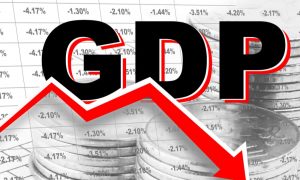 By Nageshwar Patnaik in Bhubaneswar, March 4, 2024: India is one of the fastest growing economies in the world, but it is also one of the most unequal countries. Higher economic growth with equity is the first and foremost responsibility of the powers-that-be. This can only ensure generating quality employment through the provision of quality education.
By Nageshwar Patnaik in Bhubaneswar, March 4, 2024: India is one of the fastest growing economies in the world, but it is also one of the most unequal countries. Higher economic growth with equity is the first and foremost responsibility of the powers-that-be. This can only ensure generating quality employment through the provision of quality education.
However, as things stand in India, all governments since independence have worked for boosting Gross Domestic Product (GDP) growth i.e the measures of the overall size of the economy. A recent book, titled “India is Broken”, by Ashoka Mody, Professor at Princeton University, admonishes all Indian leaders – starting from the first Prime Minister, Jawaharlal Nehru and the present PM Narendra Modi – for failing to target the correct variable: employment instead of GDP growth.
There were not enough jobs in 1950, when Jawaharlal Nehru was prime minister, and the jobs crisis, if anything, has become steadily more acute. There were fewer people employed in 2021, than in 2011; this was so at a time when 7 million to 9 million new job aspirants entered the market every year. India requires 200 million jobs over the next 10 years to employ its working-age population while in the last decade the country has experienced net zero or even net negative job growth.
A study by Indian Institute of Management (IIM), Lucknow in collaboration with researchers from Birla Institute of Technology and Science (BITS), Pilani, and the ministry of agriculture and farmers welfare, reveals that despite India’s impressive economic growth from 2004-05 to 2017-18, employment generation has lagged the country’s growing working-age population.
The study, “Discerning the Long-Term Pace and Patterns of Employment in India”, published in the Indian Journal of Labour Economics said that the slowdown in employment rate is primarily due to sectors with good potential registering lower employment growth and that despite an increase in the number of people that can work, economic growth has caused in net labour displacement. It called for turning attention to identify labour-intensive manufacturing sector
As per the study, despite an extraordinary economic growth phase from 2004–05 to 2017-18, job creation remained lacking, leading to a period of ‘jobless growth,’ where workers remained underutilized though there was a sharp increase in working-age population (ages 15 to 64). The study proposed a key policy intervention – a conscious effort to make the manufacturing sector more labour-intensive for inclusive growth. It also stated that recent improvements in health and education in India may positively influence the conversion of unemployed youth into a high-quality and skilled workforce.
On stagnation in employment generation despite economic growth, the research finds various reasons as contributing factors, “including a high percentage (55%) of self-employed workers in India compared to 33% in the US. Gender disparity in employment patterns persists, and unemployment is growing among highly educated youth.” The unemployment rate in India rises with education levels. The unemployment rate “for the illiterate and less educated class (below primary) was 0.57% and 1.13% respectively while, for the highly educated class (graduates and above), it was 14.73% in 2020–21 for the age group 15–29 years.” This pattern can be seen across the years, as per the analysis.
 This apart, inequality has been rising sharply for the last three decades. The richest have cornered a huge part of the wealth created through crony capitalism and inheritance. They are getting richer at a much faster pace while the poor are still struggling to earn a minimum wage and access quality education and healthcare services, which continue to suffer from chronic under-investment.
This apart, inequality has been rising sharply for the last three decades. The richest have cornered a huge part of the wealth created through crony capitalism and inheritance. They are getting richer at a much faster pace while the poor are still struggling to earn a minimum wage and access quality education and healthcare services, which continue to suffer from chronic under-investment.
Oxfam International in one of its reports – India: extreme inequality in numbers, points out that the top 10% of the Indian population holds 77% of the total national wealth. 73% of the wealth generated in 2017 went to the richest 1%, while 670 million Indians who comprise the poorest half of the population saw only a 1% increase in their wealth. There are 119 billionaires in India. Their number has increased from only 9 in 2000 to 101 in 2017. Between 2018 and 2022, India is estimated to produce 70 new millionaires every day. Billionaires’ fortunes increased by almost 10 times over a decade and their total wealth is higher than the entire Union budget of India for the fiscal year 2018-19, which was at Rs 24422 billion.
Many ordinary Indians are not able to access the health care they need. 63 million of them are pushed into poverty because of healthcare costs every year – almost two people every second. It would take 941 years for a minimum wage worker in rural India to earn what the top paid executive at a leading Indian garment company earns in a year.
 Here the moot question is what should be the more important concern for policymakers in India – boosting economic growth or increasing employment? Should we opt for India registering the fastest GDP growth rate even as millions of Indians fail to get a job or have a situation where most Indians have a well-paying job even if India’s GDP growth is not as fast? In the US, which is the world’s biggest economy, the primary concern is employment levels, not GDP.
Here the moot question is what should be the more important concern for policymakers in India – boosting economic growth or increasing employment? Should we opt for India registering the fastest GDP growth rate even as millions of Indians fail to get a job or have a situation where most Indians have a well-paying job even if India’s GDP growth is not as fast? In the US, which is the world’s biggest economy, the primary concern is employment levels, not GDP.
The country needs more than anything better education, better health care, reform of the judicial system, working cities, better environment, decentralized and community based governance. India is heading for a crucial general election in a couple of months. The parties must not ignore growing unrest among the youths and come out with a changed stance to boost employment as well as inclusive growth. Inclusive growth does not mean only poverty reduction but also it speaks about human development including gender development.



Leave a Reply
Be the First to Comment!